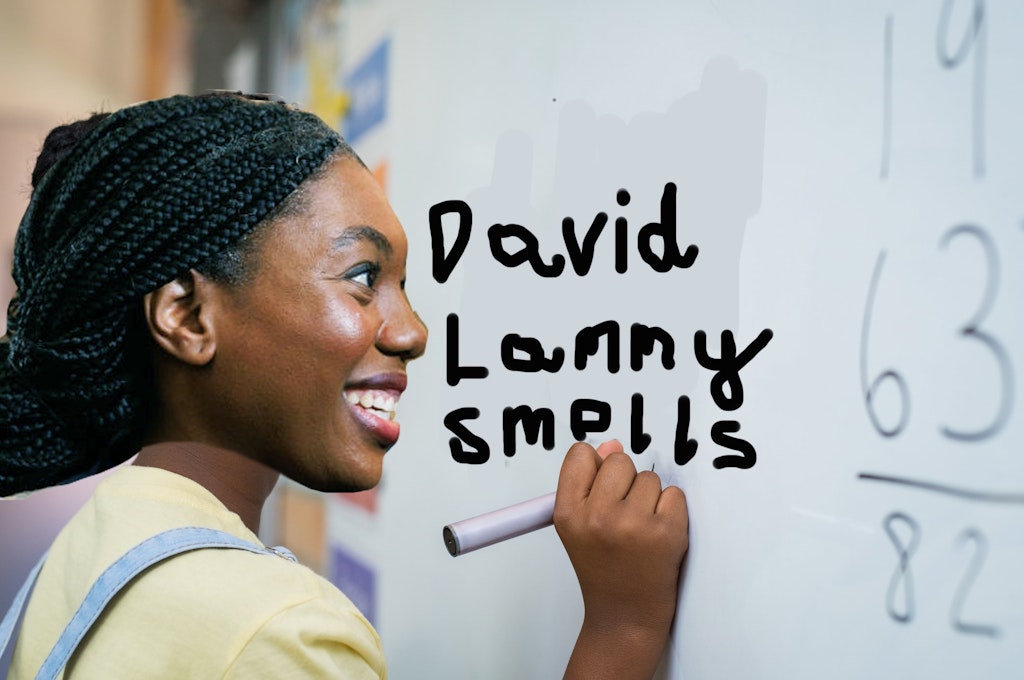A tale of two Glastos
With ho-hum bands, faux-eco fans and sky-high prices, Glastonbury Festival has strayed far from its countercultural roots
This article is taken from the August-September 2023 issue of The Critic. To get the full magazine why not subscribe? Right now we’re offering five issues for just £10.
To Joseph of Arimathea, wandering Albion while clutching his nephew’s final drinking cup, the rolling Somerset hills would have seemed the perfect setting for a New Jerusalem. To King Arthur checking in on the Holy Grail, Glastonbury Tor would have seemed the ideal spot to round-table. And to us in our own millennium, this hill is still the stuff of legend: just wander six miles east to farmland south of Pilton in late June, and you will find the greatest of England’s summer myths — the neo-utopian Republic of Glastonbury.
With a population a little north of 200,000, the temporary settlement of Worthy Farm is the third largest city in the South-West, trailing Bristol and Plymouth, but edging Bournemouth and Swindon. And, as cities go, the Republic of Glastonbury is unquestionably Britain’s hippest, slimmest and whitest community. The Glastonians forge their dreamland annually around the summer solstice — save for “fallow years” when the farmland is restored. But if you can get yourself through its imposing city walls, it will dawn quickly enough that all is not well in Glastopia.
The Republic in 2023 is a far cry from Year One, 1970, when Michael Eavis, inspired by Led Zeppelin’s barnstorming outdoor set in Bath, hosted the Pilton Pop, Folk and Blues Festival on his farm. The day after the death of Jimi Hendrix, some 1,500 people paid a pound to watch T(yrannosaurus) Rex — a late replacement for The Kinks — and Steamhammer.
Things scaled up the next year, when Andrew Kerr — enthused by his time at the Isle of Wight Festival of 1970 — and Sir Winston’s granddaughter, Arabella Churchill, organised a free festival on the farm. Located by “dowsing the ley lines” between Glastonbury and Stonehenge, the stage was a 1/10th replica of the Great Pyramid of Giza. Upward of 12,000 wide-eyed wanderers came to celebrate the solstice at this truly not-for-profit jamboree.
After a hiatus until 1979, Glastonbury became a more-or-less annual fixture, with an ever-expanding line-up, audience and site. The Republic had to grow, and the adjacent Cockmill Farm was purchased in 1985. In several years, gatecrashers doubled the number of revellers, until a perimeter fence shut out the unticketed.
As for those official ticket sales, they first passed 100,000 in 1998, and 200,000 in 2019. Prices rose in tandem too: in 1983 the three-day festival cost £12, in 1993 £58, in 2003 £105, in 2013 £210 (in today’s terms £39, £118, £183, £279, respectively), and now in 2023, following a 20 per cent hike on last year’s price, the princely sum of £340. So, as their cost of living rises, how are the temporary citizens of Glasto faring?
Glastonbury was always about music, and it still is, in a sense
Glastonbury was always about music, and it still is, in a sense. More than 60 stages host every genre under the sun. And there were some great performances this year: a star turn from Lauren Mayberry of Glasgow’s Chvrches caught the mood with pitch-perfect synth-pop; London’s Nova Twins woke up the Sunday crowd with a triumphant set of grime-infused electro-rock; Liverpool’s Stone delivered a thumping set of no-nonsense post-punk. Rick Astley (!) and Blossoms united the best of St Helens, Stockport and Manchester by offering a set solely of Smiths covers: it could have been atrocious, but was utterly glorious.
Italian Eurovision victors Måneskin then worked the crowd into a wild fervour of camp-metal chaos. Both were massively over-attended, with half the crowd stuck outside the Woodsies tent (the rebranded John Peel Stage, now that Peel faces posthumous purgatory because of remarks made in 1975 about his sexual abandon with underage fans during his years as a young DJ).
Both should have been down at the Other Stage, where instead the Manic Street Preachers continued their steady retreat into easy-listening insignificance — a rather different vibe from when bassist Nicky Wire yelled to the bemused crowd of 1994, “I say build some more fucking bypasses over this shithole.”
For a festival with such strong rock credentials, there were few genuinely heavy or alternative bands. Queens of the Stone Age chugged along with usual assurance, and the Foo Fighters offered a solid, if predictable, set. So it was quite the turn-up to be wandering the bright lights of Shangri-La’s dance quarters and stumble across the 1.30am slot of Empire State Bastard: a surreal cataract of extreme metal from the lead-singers of Biffy Clyro and Oceansize — the two bands I saw at my first gig in Manchester over 20 years ago. It was spectacularly unhinged.
But what of the three past-their-peak Pyramid headliners: Arctic Monkeys, Guns N’ Roses and Elton John? The Monkeys played a flat, meandering set that prompted unhappy comparison with 2013 and 2007. The Roses squawked through a mammoth, two-hour riff-filled romp. And Elton John — in his first and last Glastonbury performance — served up a crowd-pleasing closing show to 100,000 weary Glastonians gazing on the Pyramid stage, while the largest Glastonbury TV audience of 7.6 million tuned in, almost half of Britain’s TV viewers at the time.
Yet with an average age of 58, these three lead singers could have witnessed Churchill’s funeral. Elsewhere on the main stages were Blondie’s Debbie Harry at 78, Yusuf (Cat Stevens) at 74, and The Pretenders’ Chrissie Hynde at 71. It need not be this way: compare 1997, for instance, the famous “Year of the Mud”, when Prodigy, Radiohead and Ash topped the bill with an average age of 26. Where are today’s peak-of-their-prime acts to headline the world’s most famous alternative music stage?
Glastonbury’s pulling power is waning. Taylor Swift, the world’s most famous female musician, was due to headline 2020, before Covid scuppered two festivals in a row. It is striking that she has not taken up the offer since. Glastonbury has always offered lower fees to artists: Emily Eavis, who runs the festival after her father’s retirement, claims that for most performers the fee is “probably less than 10 per cent of what they would get from playing any of the other major British festivals … Glastonbury relies completely on goodwill.”
The headliners are rumoured to receive between £250,000 and £500,000, a figure capped appreciably below what the biggest names receive from elsewhere. A combination of Glasto’s iconic name and its charitable missions has led musicians to accept less money in the hope that their performance may be career-defining.
The UK music industry is now a third smaller than it was before the pandemic. Partly because of cost, partly because of changing modes of music consumption, bands now tour less at the small and mid-scale, leaving an elite league of high-audience, high-cost stadium performers to call the shots.
2023 is set to be an undeclared Glastonbury vintage. A case in point: when Japanese Breakfast pulled out last minute, her Sunday Other Stage slot needed rapid filling. Step forward 19-year-old Eaves Wilder, who had performed on Saturday’s BBC Introducing Stage as her tenth gig and first festival appearance.
Despite that rather flat performance, she reappeared for her eleventh gig, but it was a space the band could not fill. The lead single “I stole your jumper” felt threadbare. Given the wealth of alternatives, it was a remarkable achievement for Wilder to land this double gig, and doubtless a great source of pride to her parents, Pete Paphides and Caitlin Moran, who watched on in tears.
“None of you fucking hippies better be sitting down out there, I swear to God.” It was 4.30pm on Sunday up at the Park Stage, and Sebastian Murphy, lead singer of the Swedish punk sextet Viagra Boys, was having fun — beer and cigarette in hand — pointing out the “goddamn freaks” in the crowd. But the frontman of “Scandinavia’s worst band” had tongue lodged in cheek, for the hippies had not come out to play.
Despite 200,000 people paying so much and wandering so far to gather in the middle of nowhere, it was palpably clear that ticket-holders lacked a shared culture. No unified Zeitgeist or ideological spirit pervaded Glasto 2023, which as far as some were concerned could have been held on a brownfield site in Bedfordshire. Mercifully, most political chatter was contained within the Left Field tent — where there was precious little out of leftfield. Introduced in 2002, and curated since 2010 by Glastonbury mainstay Billy Bragg, the tent hosts broadly centre-left, liberal fodder: Ed Miliband in the house! I couldn’t stay long.
With due apology to C.P. Snow, we need to face Glastonbury’s Two Cultures problem. It is a festival within a festival, the one surrounded by another it resents. At the heart of the site is the Green Fields enclave, first carved out in 1984. Those who spend their time there, or in the adjacent Healing Fields, embody the core Glastonbury ethos: environmentalism, pacifism, anti-capitalism, alternative living of many stripes.
Those attitudes still endure there, but within a disillusioned ghetto that has little to do with the festival at large, despite their long-standing passion for music and cannabis. Although the Eavises’ sympathies clearly lie with this crowd, they have let a second festival grow that is actively in conflict with the first’s raison d’être.
The beast that fuels much of Glastonbury life is the rave scene, which supports a no less thumping drug culture rooted in MDMA, ketamine, mushrooms and cocaine. (The last of these, one of the most unethical and geopolitically destructive substances on the planet, was everywhere.) In 1995 the Dance Tent was born, becoming the Dance Village in 2005; since then, the south-east corner of the site has expanded for ever-bigger raves across the three ridings of Block9, The Common and Shangri-La.
The result of this rave-or-waive divide is more than a difference in tastes: half of the festival lives by a nocturnal schedule and has neither the energy nor interest to partake in the communal diurnal spectacle of live music; instead they wait to retreat into the individualistic, faux-sociable delusion of strobe-lit, drug-addled tremble-trance. Meanwhile, those exhausted from 15 hours’ wandering and watching live performances huddle in their tents as the waves of raves ebb and flow across the farm.
There’s an arched gateway over in Avalon that hosts an annual slogan: “Resist” (2017), “Rewild” (2019), and “All you need is love” (2022). This year’s imperative was “Revolt”. Well, yes, perhaps, but against what? Ironically, Glastonbury 2023 offered plenty of material: for all the festival’s countercultural ethos, most Glastonians perform a species of sham radicalism. “Freedom” is site-wide security patrols; “environmentalism” is mind-bending levels of consumption and litter; “anti-capitalism” is overpriced monopolies and corporate sponsorship.
Freedom is the watchword of the Republic. But freedom for what? True, you can smoke anywhere, and smoke anything: there is zero interest in patrolling drugs, or monitoring how much alcohol you lug in. But the space is no free-for-all: every quarter is divided and patrolled; VIP, hospitality and press areas form segregated, better-resourced micro-palatinates. The security staff themselves are mostly a mixture of angry Scots and bemused south Asians. As contracted workers, their heart is not obviously in the festival spirit.
Save from the pernicious oversight of the burghers of Mendip District Council, the Republic is self-governing. The city-state is a fully bordered zone, its 1,100 acres being surrounded by an 8-kilometre, 4-metre-high perimeter wall. Erected in 2002, this “superfence” is almost impregnable, overcome only by danger-ladder or turbo-tunnel. Fences were first erected to shut out New Age travellers in 1992, but left wanting in 1994 when breached by some 200,000 chancers, creating less an anarchic utopia than a violent, dangerous bearpit.
So who now gets inside the fence? Not the sorts who came to the festival in decades past. Most people living life against the grain aren’t constantly refreshing websites to buy tickets in the half-hour before they vanish. They are unprepared to beat the well-organised, spreadsheet-wielding, WhatsApp-megagroup cartels of ticket buyers, who gobble six-ticket chunks in a matter of moments: I have seen absurdly large-scale ticket-mining factories with which no solo “amateur” buyer could ever compete.
Capitalism turns the wheels inside the Republic. Everything has a price, and a pretty one at that. Market traders typically pay around £10k for their pitch, and generally head home with a five-figure profit. Little surprise: your pint of lager (the ubiquitous Brooklyn Pilsner) is £6.50, a pack of crisps is £2.50 — and that’s all on top of the steep ticket price.
The festival costs towards £50 million to put on, and usually turns a seven-figure profit. It also offers some £2 million to charitable causes, with Oxfam, Greenpeace and WaterAid being the main beneficiaries; the Campaign for Nuclear Disarmament, long-standing friends of the festival, operate the bag drops and proved to be thoroughly lovely folk. In addition, the festival generates over £100 million for the economy of the South West, which is all to the good — but not without cost.
The Republic trumpets its environmental credentials. And, given the scale, it needs to: the nearly 5,000 toilets — each a life experience in their own unpredictable way — see some 100,000 toilet rolls given away; 1.1 million litres of water are consumed. Posters intone “Reuse, reduce, respect” but it is difficult to describe the titanic scale of litter: by late evening you are literally walking on a dais of cans, bottles and nitrous oxide canisters. It costs around £800,000 to clean up this most self-serving expression of consumer freedom.
And where is nature in this green idyll?
And where is nature in this green idyll? Yes, there is a woodland walk, and a small glade, each no bigger than a Wiltshire Wetherspoons. But there is no communing with nature: every possible bush or tree is inexplicably fenced off by metal screens; all that is left are sterile, and ever more distressed, fields of grass. Down in the “Sacred Space” you will find the Swan Circle, a henge of some 20 stones. It is rather smaller than Stonehenge proper, and was constructed about 5,000 years later, during the first year of John Major’s government.
Several festival-goers hug the rocks to channel their mystic power; others wonder how much the local quarry charged for these limestone off-cuts. All visitors who fled the city longing to find some rural beauty may fairly ask, “Is this it?”
The average Glastonian is around 40, but plenty were a full generation older or under. Along the way I met many cheerful and peaceable music lovers: when the songs played they shared some real bonhomie. But away from the stages there wasn’t much of a free love atmosphere.
In all corners, the air was hearteningly replete with regional accents, especially from the North; most of Merseyside and Tyneside seemed to have found their way to Glastopia. Meanwhile hundreds of children roamed the site, some delicately wrapped up in shawls and ear-muffs, others staring saucer-eyed at their sozzled parents swaying under the influence. Different strokes for different folks, I suppose.
The cause is not lost. You can still hear the true heart of Glastonbury beating away; but while the head buzzes with genuine sincerity and promise, its eyes and ears have switched off. The Republic has lost sight of the people it is meant to serve, while counting the pennies of those who fill its coffers.
A genuinely countercultural, performance-driven, people-powered festival can be resurrected: Glastonbury can reawaken its legend, if it gets a grip on what it really wants to be. But, as it stands, Worthy Farm is worthy of far more.
Enjoying The Critic online? It's even better in print
Try five issues of Britain’s most civilised magazine for £10
Subscribe














